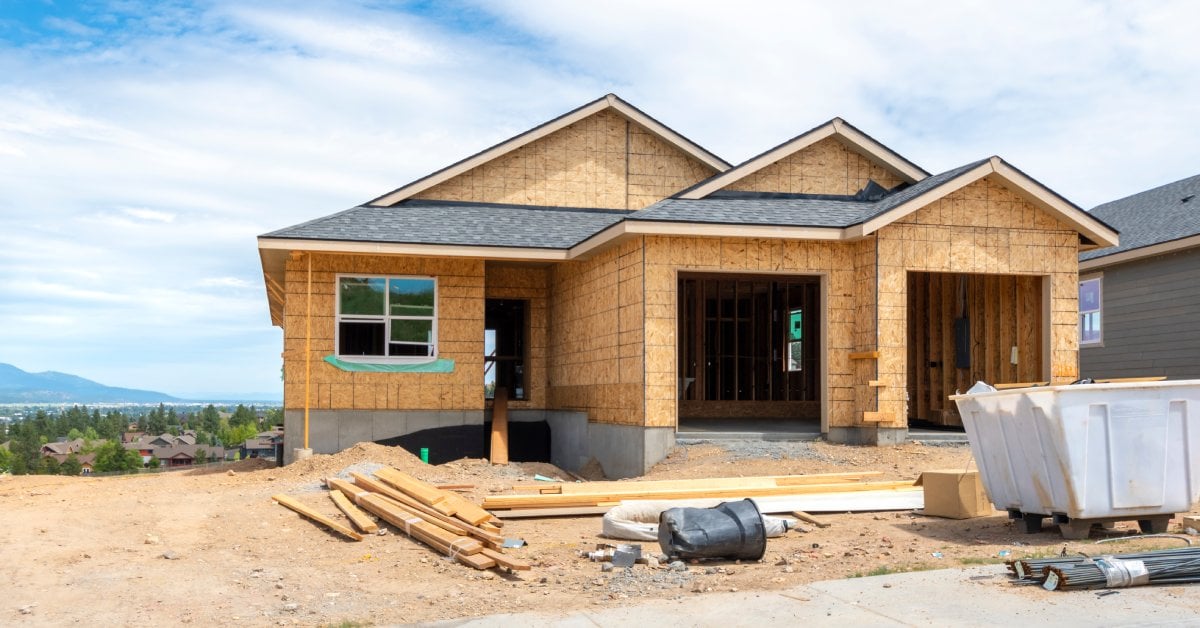Successful ground-up construction projects begin with clear planning, organized financing, and a trusted lending partner. Unlike fix-and-flip efforts, new builds involve complex budgeting and timelines that test even seasoned investors.
Every phase, from lot acquisition to the final walkthrough, draws attention from lenders and inspectors alike. Understanding how construction loans support each part of your project creates leverage, not confusion. With the right strategy, builders maintain control and momentum through every milestone.
Coverage Areas in Ground-Up Construction Loans
Construction loans rarely cover every single expense, so builders must understand what gets funded and what does not. Approved items often include excavation, foundation work, framing, roofing, mechanical systems, and interior finishes. However, items like furniture, landscaping, or unpermitted structures typically fall outside of standard loan coverage.
Banks expect detailed line-item budgets tied directly to phase milestones, not vague lump sums. Providing contractor quotes and supplier estimates gives lenders the clarity they need to structure draw schedules effectively. A poorly scoped budget creates major funding gaps during construction.
Land purchase is often financed separately or rolled into the loan, depending on the equity position. Soft costs, such as permit fees and architectural planning, sometimes qualify but depend heavily on the lender’s policy. Following an expert guide for ground-up construction loans for new builders means identifying eligible costs and separating out unsupported items.
Misalignment between the scope and actual spending causes friction during draw approvals, especially when invoices fall outside the agreed-upon terms. Builders must identify which costs require upfront equity and which lenders will reimburse to prevent cash flow crises halfway through a foundation pour or roof install. Separating hard construction categories from discretionary upgrades builds lender trust and keeps documentation aligned.
Timeline Structure for Ground-Up Construction Projects

Phases in new construction each trigger a new round of scrutiny from lenders who require updated documentation before releasing funds. Clearing trees and pouring foundations only mark the beginning of the process. Lenders expect to see regular photo updates and inspection reports as you complete drywall installation, plumbing, and electrical wiring, with each milestone aligning to specific draw stages.
Material delays, permit holdups, or contractor no-shows throw off funding timelines unless builders plan contingency days into the schedule. Smaller builders often fail to forecast how rain delays or zoning office closures push back other subcontractors. Bigger crews with clear start and end dates for every task stay ahead of funding slowdowns.
The draw release schedule becomes the heartbeat of the project, affecting everyone from subcontractors to suppliers. Builders must match actual progress with scheduled inspections to receive timely payments. No ground-up construction loan guide for new builders is complete without addressing timelines for ground-up construction.
Unexpected changes, such as subcontractor overbooking, scope creep, or last-minute design adjustments, cause applications to stall. Documented progress that aligns with original plans remains the only basis for lender disbursements.
Without clear site photos or updated inspection logs, approvals slow down or stop completely. Timely communication helps accommodate weather-related delays, but vague documentation creates unnecessary funding setbacks.
Expectations From Lenders During the Approval Process
Lenders don’t just look at credit; they want proof your team can handle a full build from scratch. Project blueprints, contractor licenses, detailed cost breakdowns, and experience with previous construction work all matter. Underwriters dig deep to assess whether your team can complete the project safely and profitably.
Approval hinges on strong budgeting and reasonable construction timelines. Excessively optimistic plans or vague materials lists create red flags that delay or prevent approval. Lenders want to see proper vetting of vendors and signed contracts with suppliers or general contractors.
Post-approval, most lenders tie disbursements to permits, site evaluations, and third-party inspections. A quick approval doesn’t guarantee fast funding without passing each milestone. Builders need to treat lender requirements as operational steps, not just paperwork.
Each lender may have different documentation preferences, so knowing which formats, signatures, and forms they prioritize can speed up the underwriting process. Rejected items often come from missing subcontractor details or unsupported assumptions in project sequencing. Familiarity with municipal code requirements and builder liability insurance coverage helps teams stay aligned with lender risk tolerance. Thorough preparation shortens approval cycles and prevents costly rework that slows initial capital access.
Evaluation Criteria When Comparing Loan Providers

Construction loans vary widely between lenders—even among those that cater to builders. Some lenders specialize in short-term funding with flexible draw schedules, while others focus more on rates and upfront equity. Comparing only interest rates leads to trouble if draw timelines don’t match build realities.
Center Street Lending offers ground-up construction financing services to help you succeed in your real estate plans. We work with experienced investors and business owners who want responsiveness, flexibility, and support from a lender who understands the full scope of new construction. Conversations with our team go beyond spreadsheets—we care about your strategy.
Check how often a lender conducts inspections, what documentation they request, and how long disbursements typically take. A great partner will walk you through funding timelines, common roadblocks, and reporting tools from the beginning. Take note of support staff availability and the lender’s familiarity with your market area.
Requirements for a Successful Closeout Phase
As your build nears completion, lenders request specific documentation to authorize the final payment. Occupancy certificates, lien waivers, job site photos, and subcontractor confirmations all factor into the release. Without those in hand, the project sits idle even if the walls are painted and the floors are laid.
Closeout phases test every recordkeeping habit built during the project. Builders who maintain photo logs, inspection records, and subcontractor payment history face far fewer delays. On the other hand, gaps in documentation create bottlenecks that stall final inspections.
If you’re planning an exit strategy, such as refinancing into a rental product or listing the home for sale, you must align closing schedules with loan expiration dates. Final draws don’t arrive overnight, so poor planning can derail closings or refinances. A clear exit plan protects gains and positions your next project for immediate momentum.
Every successful builder follows a process, from breaking ground to the final walk-through. Experienced investors understand that strong financing partners reduce delays, maintain smooth timelines, and protect profits across phases.
Find Ground-Up Construction Services Today
A comprehensive guide like this helps remove the guesswork and spotlight the decisions that keep construction on track. Transparency, communication, and preparation support every successful funding cycle.
For expert guidance, contact Center Street Lending to learn how our ground-up construction loans support builders who plan smart and execute with precision. Let’s build your next success together!

